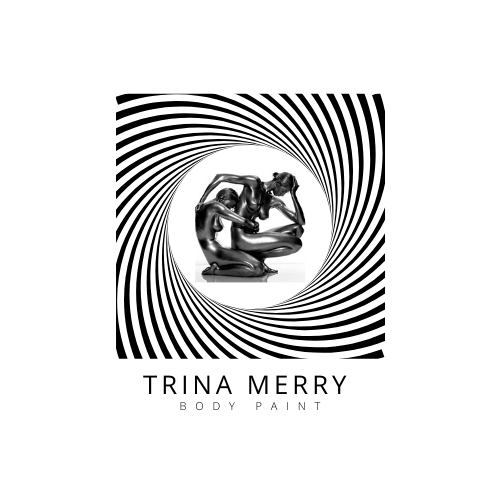Body Painting Case Study: This is Pain
Assignment
How would the world react if your chronic pain was visible?
Specialty pharmaceutical company BioDelivery Sciences International (BDSI) launched This Is Pain, a long-term initiative seeking to improve the wellbeing of more than 10 million Americans living with chronic pain today.
As a company dedicated to helping people living with chronic conditions, the motivation behind the This is Pain campaign was simple. Namely, to address the broader needs of the chronic pain community and to propel their voices into the mainstream consciousness.
Problem
The masterminds behind the This Is Pain campaign had three main objectives; to combat the stigma associated with chronic pain, foster advocacy and encourage definitive action.
To do this, organizers had to establish a plausible and impactful plan to achieve the goals.
One of the biggest challenges, for example, was finding a relatable method for translating the key messages of the campaign in an instant, with the level of personability and entertainment that’d keep the audience captivated.
Chronic pain and its associated issues also needed to be represented sensitively. With constant stories about opioid misuse in the mainstream media, how would the campaign gently dismantle the common misunderstandings around pain and pain relief, for example?
Solution
Partnering with mixed media artist Trina Merry, BDSI utilized the stunning quality of body painting to illustrate the stories of eight people who live with chronic pain.
In a special experiential artwork installation, Trina Merry and her team depicted the vivid pain felt by each individual with the sharp strokes and bold colors of her paintbrush - with striking attention to detail.
The combination of body paint with her professional photography convey an enthralling human connection that is difficult for other art forms to match, nevermind exceed.
Displayed at Oculus Plaza in New York City, between December 12-15, 2019, the visual narrative exposed the audience to body paint models from diverse backgrounds, which included a former Air Force veteran, hospital worker, mother, and an artist.
Each person stepped forward to express their unique experience with chronic pain. Commonly, they all shared the same feelings of desperation and isolation that accompanies chronic pain conditions.
“I thought it was fascinating,” said Tyler, a keen observer. “As a physical therapist, I have the pleasure of treating similar folks to these every single day. It’s important to bring relevance and life to chronic pain because it’s so prevalent in society today. So many people are battling with it and so many people need help,” he added.
By showing the picture of chronic pain, the artwork gave the condition a visual form and shape in the minds of watchers, with the hope that it would encourage patients and their providers to talk more about their experiences.
Furthermore, the artwork brought a better understanding of how to best address chronic pain questions, meaning that sufferers can be open and not have to shy away from it.
Results
Over 4,000 New Yorkers visited the This Is Pain Exhibition from Thursday, December 12th through Sunday, December 15th. Visitors ranged from commuters to holiday shoppers and most captured content on phones or cameras. Also, the campaign achieved 18 pieces of earned media coverage and one million social media impressions.
The exhibition saw many attendees develop an appreciation for the impact of chronic pain as a disease state, not a symptom.
“It was definitely captivating and it shows that there are people who look great from the outside, and internally they’re suffering,” said Ashley, an attendee.
Fellow visitor Hesta commented: “This piece really helped me understand chronic pain in a different way and really affected me so I’m glad that I stopped by.”
It was a valuable push in the right direction for achieving long-term policy change to increase access to safe and effective treatment options for chronic pain individuals living with chronic pain, as well fairer treatment in the workplace and society.
Carissa was brought to tears during the event. She said: “I got emotional. I got teary-eyed watching it because it reminds me of so many people I know.”
“It’s visually beautiful and I think that’s cool and it brings attention to come inside,” stated Magdaline
To learn more about the This Is Pain campaign and chronic pain as a disease state, visit www.ThisIsPain.com.
Trina Merry’s “This is Pain” bodypaint exhibition at Oculus World Trade Center NYC
Body painting is a process that involves a world of trust, and I was humbled by my subjects’ trust in me with both their bodies and their stories. As a chronic pain sufferer, I know how important it is to feel understood, to feel validated and to feel seen. My hope is that this exhibit can help generate understanding and compassion and show the world what living with chronic pain is really like. Process & Technique: Acclaimed body painter and visual artist, Trina Merry, listened to the stories of eight chronic pain sufferers, asking them to describe how their pain “feels” with visual descriptors like color, metaphor and shape. She then translated this into a visual narrative using body paint and photography; aiding them in bringing their hidden symptoms to the surface of their skin so that they can share their stories with you.
Process & Technique: Acclaimed body painter and visual artist, Trina Merry, listened to the stories of eight chronic pain sufferers, asking them to describe how their pain “feels” with visual descriptors like color, metaphor and shape. She then translated this into a visual narrative using body paint and photography; aiding them in bringing their hidden symptoms to the surface of their skin so that they can share their stories with you.
Learn more: https://www.thisispain.com









